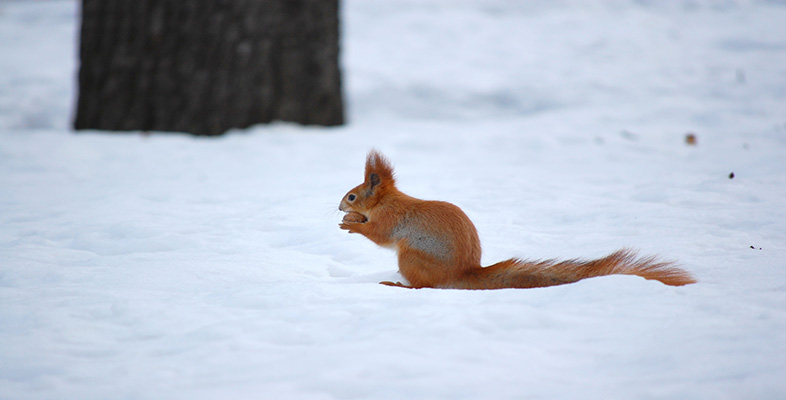1.2.1 The molecular level
It is common knowledge that the freezing point of pure water is 0°C. Often, however, the temperature of water can fall below 0°C without it freezing, for two reasons:
Any solvent containing a dissolved substance has a lower freezing point than when pure, which is why the sea freezes at a lower temperature than clean freshwater.
The occurrence of supercooling, the phenomenon by which a fluid remains liquid at a temperature below its normal freezing point. Freezing occurs when water molecules become aligned in a particular pattern that leads to the formation of ice crystals. It begins when two molecules become aligned, a process called nucleation, and ice grows from a nucleation point. Whether or not water molecules become appropriately aligned depends on the conditions, so the temperature at which freezing occurs varies within a narrow range. Supercooled water freezes abruptly if an ice crystal is added to it. Small objects such as microbes also act as nucleation points, including certain bacteria on the surfaces of plant leaves. For example, Pseudomonas syringae cells act as ice-nucleation points, causing ice to start forming at −1°C. In the absence of these bacteria, ice does not form on plants until about −5°C. Genetically engineered strains of P. syringae, called 'ice-minus', have been produced which lack ice-nucleating characteristics. When these bacteria are sprayed onto the leaves of crop plants, they make them more frost-resistant.
Fishes living in temperate and arctic habitats remain active through the winter (strategy 1 in Table 1.1), swimming about in very cold water. The winter flounder (Pseudopleuronectes americanus), for example, swims actively in water at a temperature well below the freezing point of its blood. What prevents its tissues from freezing? Two hypotheses, both of which invoke molecular levels of explanation, have been proposed. The ice-prevention hypothesis is that the tissues of fishes contain compounds that act as antifreeze, lowering the overall freezing point of their cells and body fluids. A number of such compounds have been identified, but they do not occur in some body fluids, such as urine and the fluid in the eye, suggesting that freezing is only prevented in some parts of the body. The alternative hypothesis, proposed by Valerio et al. (1992) is that ice is excluded from the body by a surface barrier. The skin of the winter flounder contains peptides (short chains of amino acids) which prevent ice formation. These molecules act in two ways: by lowering the freezing point of water in the skin and by binding to water molecules and so preventing them from binding to each other to form ice crystals. As described above, ice grows from nucleation points and the skin prevents ice formation at the fish's interface with very cold water.
